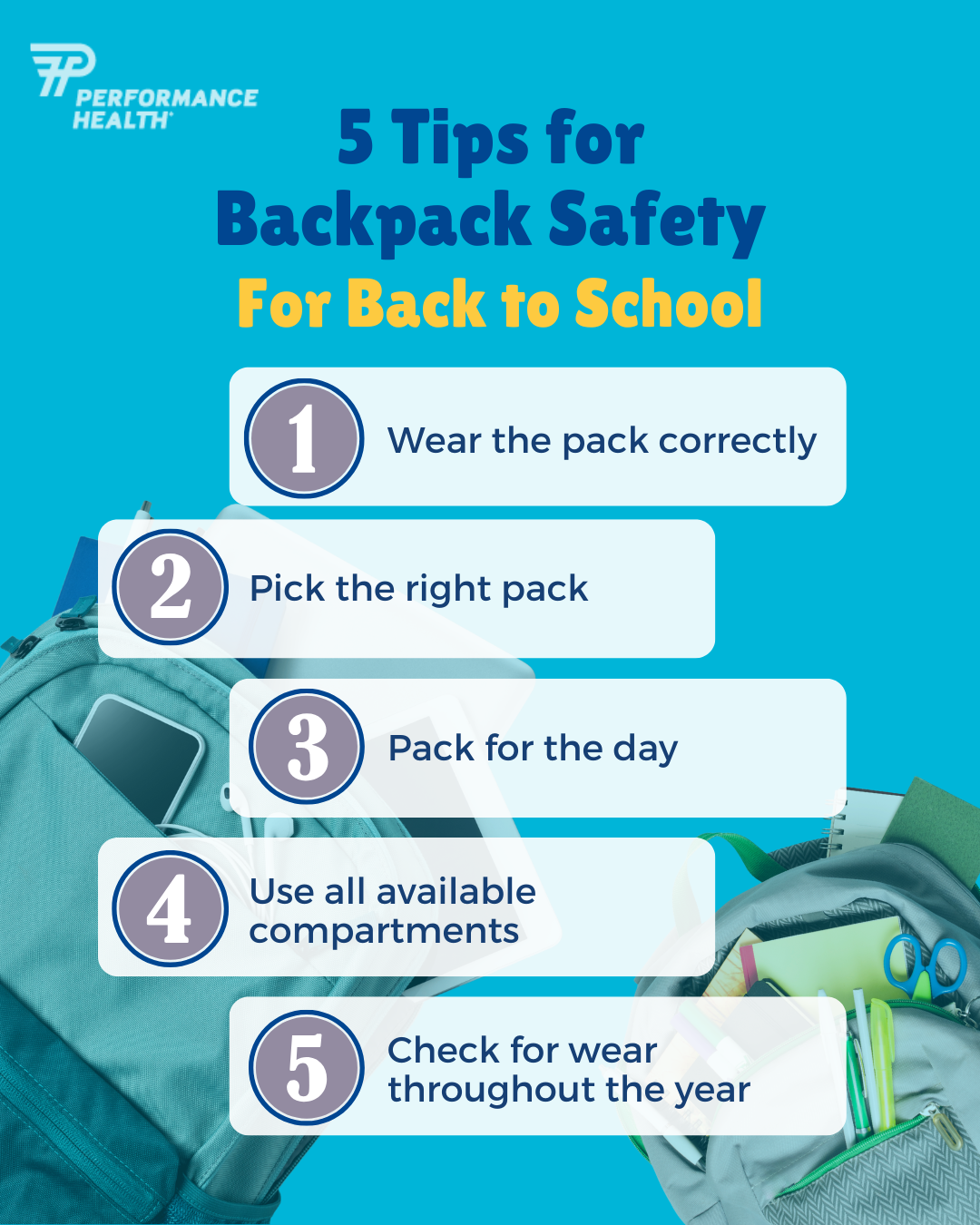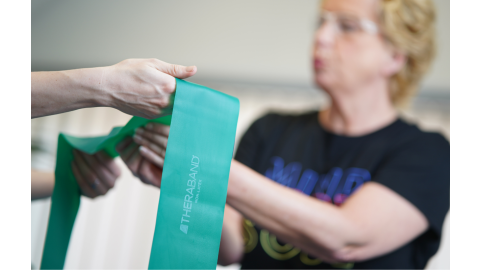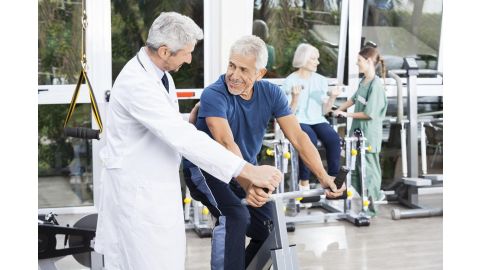An estimated average of 1,200 emergency room injuries in children under the age of 19 were attributed to backpacks from 2019 to 2021.
If you’re a physical therapy clinic seeing a lot of students coming in with back pain or are looking for a new way to connect with your community, you may want to consider offering backpack screenings to assess children and the backpack they’ve chosen to see if it’s a proper match.
Tips & Information to Share in a Backpack Safety Screening
When considering offering backpack safety screenings, or complimentary screenings of any type, it’s important to consider insurance regulations and direct access rules that may apply. Federal guidelines may restrict beneficiaries of federally funded plans, such as Medicare, Medicaid, Tricare and VHA, from participating in free assessments. Direct access rules can vary by state and service and may also impact eligibility.
Here is some information to share with patient during the screening:
- How to choose a backpack – Bags should have two wide, padded shoulder straps and should be the appropriate size for the body. Based on your assessment of the patient, you can provide guidance on the size and shape of the backpack and the best posture to practice while wearing it.
- Capacity limits – Backpacks should weigh no more than 10-15% of the individual’s body weight, and the heaviest items should be placed closest to their back. Remember, bigger isn’t always better. When there’s space to fill, you’re likely to carry more.
- What to do if they experience pain or discomfort – It’s important to act swiftly when experiencing pain or discomfort to prevent injuries and long-term musculoskeletal problems. If an individual experience pain or discomfort, they should schedule an appointment with a therapist.
You can also share 5 simple backpack safety tips to help parents, and their students make good decisions when it comes to their backpack:
- Wear the pack correctly: straps should be properly placed on the shoulder and according to the design of the pack – no slinging over one shoulder!
- Pick the right pack: choosing a backpack that matches the size and age of the child is essential as well as ensuring it can bear the load it will be needed to carry.
- Pack for the Day: Any unnecessary weight should removed at the start of each day so the child is only carrying what they need for the day.
- Use all available compartments: placing the heaviest items closest to the back will help reduce strain, but also dispersing weight throughout the pack will assist in reducing soreness.
- Check in through the year: be sure to address worn and broken straps right away before they contribute to injuries or create undue strain over time.
Please feel free to use the shareable to engage with your community and spread proper backpack practices:
Where to Offer Free Screenings
Many practices offer free screenings on a regular basis, allowing potential patients to book a screening directly from their website. In addition to offering screenings on a by appointment basis in your clinic, there are many other ways you can offer screenings within your community.
- Participate in community events
- Provide first aid or screenings at a sporting event or race
- Host an assembly at your local school(s)
- Meet with the PTA
- Talk to your local news station
- The opportunities are endless!
Benefits of Offering Free Screenings
- Building trust within your community – a screening open to the public allows for initial interaction and builds rapport between the community and the clinic.
- Early intervention & prevention – conducting screening for younger children allows you to identify potential issues early and may prevent them from becoming more serious over time.
- Attract new patients – free screenings offer a low-pressure entry point for people who may be unsure if rehabilitation is right for them and removes the barriers of doctor referrals and additional medical expenses.
Recap
Backpacks are meant to be a tool to equip students as they embark on their education. They’re a staple for heading back to school; let’s ensure they’re not also sending students to the emergency room.
Offering backpack screenings is a fantastic way to engage with and serve your community while also encouraging healthy habits for children. We hope this article has provided a place for you to start championing backpack safety.
From orthopedic back & shoulder supports & braces to red light therapy modalities, Performance Health is proud to offer the products you and your patients need.
Medical Disclaimer: The information provided on this site, including text, graphics, images, and other material are for informational purposes only and are not intended to substitute for professional medical advice, diagnosis, or treatment. Always seek the advice of your physician or other healthcare professional with any questions or concerns you may have regarding your condition.
References
- American Physical Therapy Association. “3 Tips for Backpack Safety.” ChoosePT, https://www.choosept.com/health-tips/3-tips-backpack-safety.
- American Occupational Therapy Association. “International Backpack Awareness Day Focuses on Proper Usage.” AOTA, https://www.aota.org/about/for-the-media/international-backpack-awareness-day-focuses-on-proper-usage.
- Ivy Rehab. “Backpack Safety: What Parents Need to Know.” Ivy Rehab, https://ivyrehab.com/health-resources/health-wellness/backpack-safety-what-parents-need-to-know/.
- Private Practice Section, APTA. “Head Back to School with a Healthy Back.” PPS APTA Blog, https://ppsapta.org/blog/marketing/head-back-school-healthy-back.








 France
France Australia
Australia







